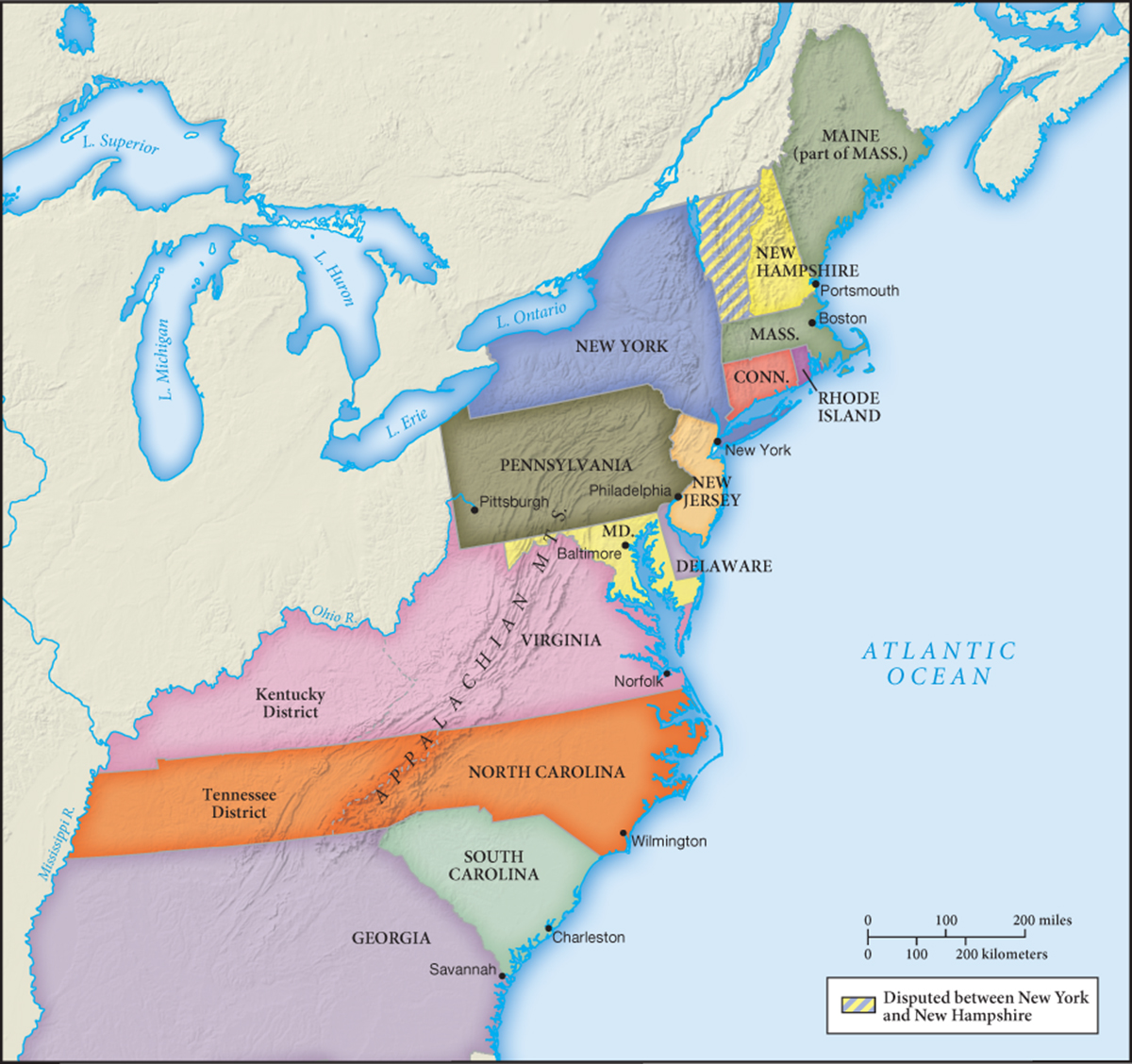The North American Revolution, 1775–1787
Every schoolchild in the United States learns early that the American Revolution was a struggle for independence from oppressive British rule. That struggle was launched with the Declaration of Independence in 1776, resulted in an unlikely military victory by 1781, and generated a federal constitution in 1787, joining thirteen formerly separate colonies into a new nation (see Map 16.1). It was the first in a series of upheavals that rocked the Atlantic world and beyond in the century that followed. But was it a genuine revolution? What, precisely, did it change?

Change
What was revolutionary about the American Revolution, and what was not?
By effecting a break with Britain, the American Revolution marked a decisive political change, but in other ways it was, strangely enough, a conservative movement, because it originated in an effort to preserve the existing liberties of the colonies rather than to create new ones. For much of the seventeenth and eighteenth centuries, the British colonies in North America enjoyed a considerable degree of local autonomy, as the British government was embroiled in its own internal conflicts and various European wars. Furthermore, Britain’s West Indian colonies seemed more profitable and of greater significance than those of North America. In these circumstances, local elected assemblies in North America, dominated by the wealthier property-
There were, however, real differences between Englishmen in England and those in the North American colonies. Within the colonies, English settlers had developed societies described by a leading historian as “the most radical in the contemporary Western world.” Certainly class distinctions were real and visible, and a small class of wealthy “gentlemen”—the Adamses, Washingtons, Jeffersons, and Hancocks—
Thus the American Revolution grew not from social tensions within the colonies, but from a rather sudden and unexpected effort by the British government to tighten its control over the colonies and to extract more revenue from them. As Britain’s global struggle with France drained its treasury and ran up its national debt, British authorities, beginning in the 1760s, looked to America to make good these losses. Abandoning its neglectful oversight of the colonies, Britain began to act like a genuine imperial power, imposing a variety of new taxes and tariffs on the colonies without their consent, for they were not represented in the British Parliament. Many of the colonists were infuriated, because such measures challenged their economic interests, their established traditions of local autonomy, and their identity as true Englishmen. Armed with the ideas of the Enlightenment—
What was revolutionary about the American experience was not so much the revolution itself but the kind of society that had already emerged within the colonies. Independence from Britain was not accompanied by any wholesale social transformation. Rather, the revolution accelerated the established democratic tendencies of the colonial societies. Political authority remained largely in the hands of existing elites who had led the revolution, although property requirements for voting were lowered and more white men of modest means, such as small farmers and urban artisans, were elected to state legislatures.
This widening of political participation gradually eroded the power of traditional gentlemen, but no women or people of color shared in these gains. Land was not seized from its owners, except in the case of pro-
Nonetheless, many American patriots felt passionately that they were creating “a new order for the ages.” James Madison in the Federalist Papers made the point clearly: “We pursued a new and more noble course … and accomplished a revolution that has no parallel in the annals of human society.” Supporters abroad agreed. On the eve of the French Revolution, a Paris newspaper proclaimed that the United States was “the hope and model of the human race.”5 In both cases, they were referring primarily to the political ideas and practices of the new country. The American Revolution, after all, initiated the political dismantling of Europe’s New World empires. The “right to revolution,” proclaimed in the Declaration of Independence and made effective only in a great struggle, inspired revolutionaries and nationalists from Simón Bolívar in nineteenth-